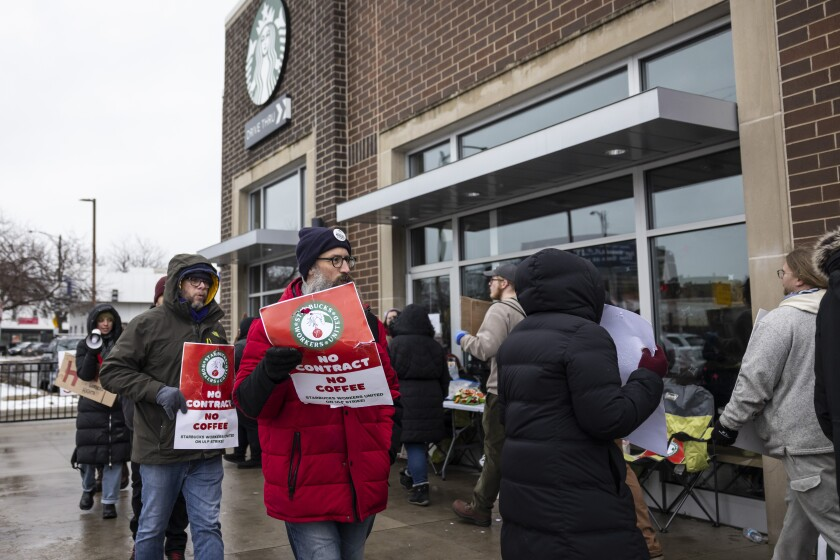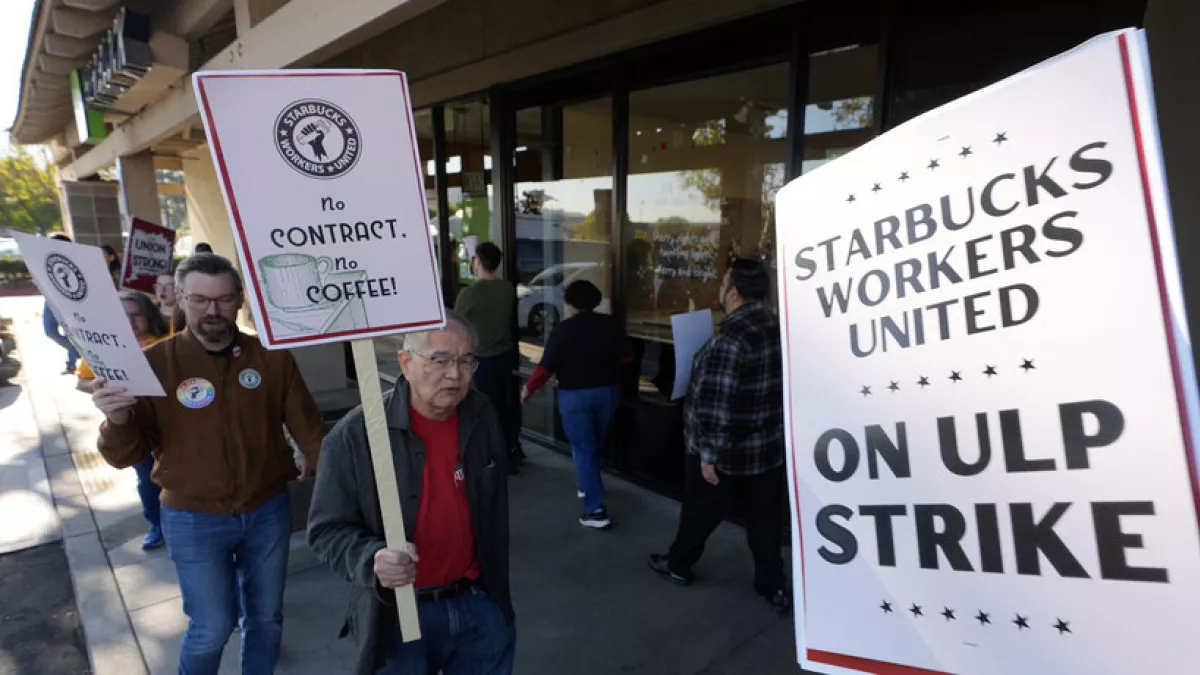The festive season this year has taken an unexpected turn for one of the most popular coffee chains in the United States. As Christmas approaches, baristas from nearly 60 Starbucks locations have traded their aprons for picket signs, marking a significant labor strike across the country.
Starting on December 20 in cities such as Los Angeles, Chicago, and Seattle, the strike has now spread to include locations in Boston, New York, Philadelphia, Pittsburgh, Columbus, St. Louis, Dallas, Denver, and Portland, Oregon.
The striking workers are voicing grievances about fair wages, better working conditions, and the company’s alleged failure to negotiate a labor agreement.
The Roots of the Starbucks Strike
Starbucks Workers United, the organization spearheading unionization efforts at the company, has expressed frustration over stalled negotiations. The group alleges that Starbucks has not honored its commitment to reaching a labor agreement with the union, a pledge that has loomed over the discussions throughout the year.
Despite being a coffee giant with billions in revenue, the company has faced criticism from its employees for not addressing the hundreds of complaints filed with the National Labor Relations Board.
Union members and employees on strike, like Kai Krawczeniuk, highlight the financial struggles many baristas face. “Our hope is that this will bring Starbucks back to the bargaining table so they can provide us with livable wages,” said Krawczeniuk.
The barista emphasized the disparity between the company’s profits and the difficulties employees encounter in affording basic necessities like rent and groceries.
Read : 3 Words Found Carved on Bullets Used to Kill UnitedHealthcare CEO in US
While Starbucks claims to have implemented annual raises of at least 1.5% for unionized workers, employees argue that these measures fall short of their expectations.
Read : “You Cannot Become a CEO in America If You Are Not Indian”: US Envoy Eric Garcetti
Though the company touts an average hourly wage of $18 and a benefits package potentially worth $30 an hour, workers believe these figures do not align with their lived experiences. For many employees, the strike is not just about wages but also about addressing systemic issues within their workplace.
The Impact of the Strike on Starbucks Operations
Despite the growing number of participating stores, Starbucks has maintained that the strike has had “no significant impact” on operations at its 10,000 company-owned locations in the U.S.
However, the union has called for public support, urging consumers to avoid purchasing from any Starbucks store during the strike. The goal is to amplify the workers’ message and demonstrate the strength of collective action.

The strike represents only a fraction of Starbucks’ total workforce, as just over 500 stores have voted to unionize in recent years. Yet, the visibility and timing of the strike—occurring during one of the busiest periods of the year—underscore its significance.
Starbucks’ reputation as a socially conscious and employee-friendly company has come under scrutiny, with the strike casting a spotlight on the broader labor movement within the service industry.
In cities like Chicago, Seattle, and New York, picket lines outside Starbucks stores have drawn attention from both customers and passersby. Employees have shared their stories and demands, creating a narrative that resonates with many who face similar struggles in their workplaces.
For Starbucks Workers United, the strike is not just about immediate outcomes but also about setting a precedent for how major corporations should engage with their employees.
A Pivotal Moment for Labor Relations in the US
The Starbucks strike reflects a larger trend in the United States, where workers across various industries are advocating for fairer treatment and better conditions.
Over the past few years, there has been a resurgence in unionization efforts, driven by growing income inequality and rising costs of living. Workers are increasingly demanding transparency and accountability from their employers, particularly in sectors where profits have soared while employee wages have stagnated.
Starbucks is no stranger to criticism. Its branding as a progressive company has often clashed with the reality faced by many of its employees. The strike reveals the tension between the company’s public image and the internal challenges it faces in managing labor relations.
For Starbucks, addressing these grievances effectively could determine its ability to maintain a positive reputation among both employees and consumers.

As the strike continues, it has garnered support from various labor organizations and advocacy groups. The visibility of the strike has amplified conversations about workers’ rights, corporate responsibility, and the power dynamics within the service industry.
Whether Starbucks chooses to return to the bargaining table with new proposals remains to be seen, but the strike has undoubtedly placed the company under significant pressure.
The strike affecting nearly 60 Starbucks locations across the U.S. is more than a temporary disruption—it is a statement of workers’ determination to fight for fair treatment and livable wages.
As Christmas nears, the ongoing demonstrations highlight the broader challenges within the service industry and the growing momentum of the labor movement.
For Starbucks, the path forward will require not only addressing the immediate demands of its employees but also reassessing its approach to labor relations and its commitment to being a socially responsible employer.
let’s enjoy few years on earth with peace and happiness….✍🏼🙏

